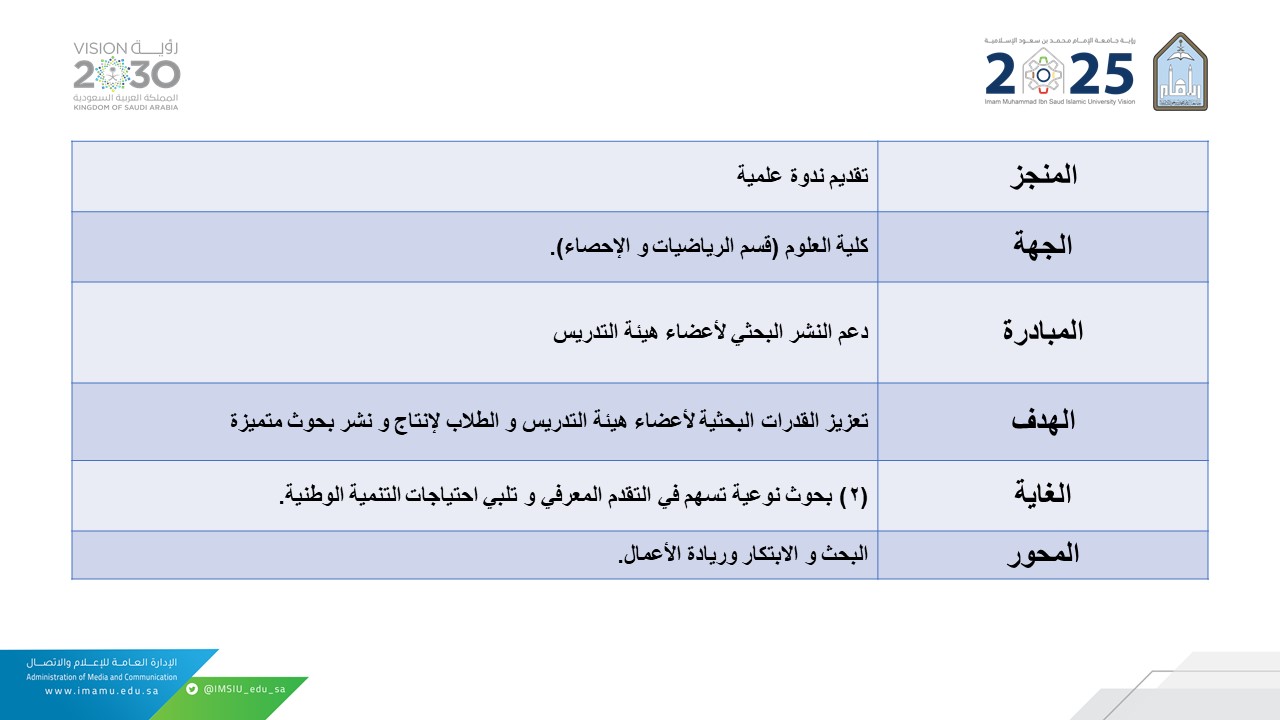تحت إشراف قسم الرياضيات و الإحصاء أقيمت يوم الثلاثاء ندوة علمية بعنوان:
VISUALISING PROTEIN SEQUENCE ALIGNMENT
قدمتها:
د. شيماء الجهني.
و ذلك في يوم الثلاثاء الموافق 24- 8- 1442هـ في تمام الساعة 2 مساءََ عبر برنامج زوم.
ملخص البحث:
In bioinformatics, protein sequence analysis aims to convert sequence information into useful biochemical and biophysical knowledge that provides deeper understanding of structure and function of the known sequences and hence transfer this knowledge to uncharacterised ones. A fundamental task of protein sequence analysis is sequence alignment. Sequence alignment used strings of contiguous letters of amino acids, arranged in vertical register in order to highlight regions of similarity and difference. The conserved regions highlight evolutionary constrained parts of the molecular structure from which biological roles are likely to be inferred. This artificial view has become the norm and sequence alignments are seldom viewed in other ways. When sequences have different lengths, gap characters are inserted to denote insertions or deletions; however, gaps have no meaning in 3D structures. This project intended to revisit the protein sequence alignment problem by exploring possible ways to visualise the relationships between sequences in three dimensional space with eliminating gap characters. In our work, anN -body Hamiltonian dynamic system in contact with a heat bath is built to model each protein sequence as a set of particles connected by springs. The sequence alignment is then presented by vertical springs connecting aligned pairs of amino acids where gaps are presented by stretched springs and unaligned amino acids corresponding to these gaps are repelled out of the plane. The configuration that the dynamic system adopts in three dimensional space when the potential energy of the system reaches a steady state will be the basis of the visualisation. The novel 3D visualisations generated by our model for various alignments were able to highlight structural features in a concise way without gaps, providing an overview of the full alignment, which can be explored interactively. The method opens the possibility of analysing much larger alignments that wouldn't be possible with conventional visualisations produced by current alignment tools and editors.

